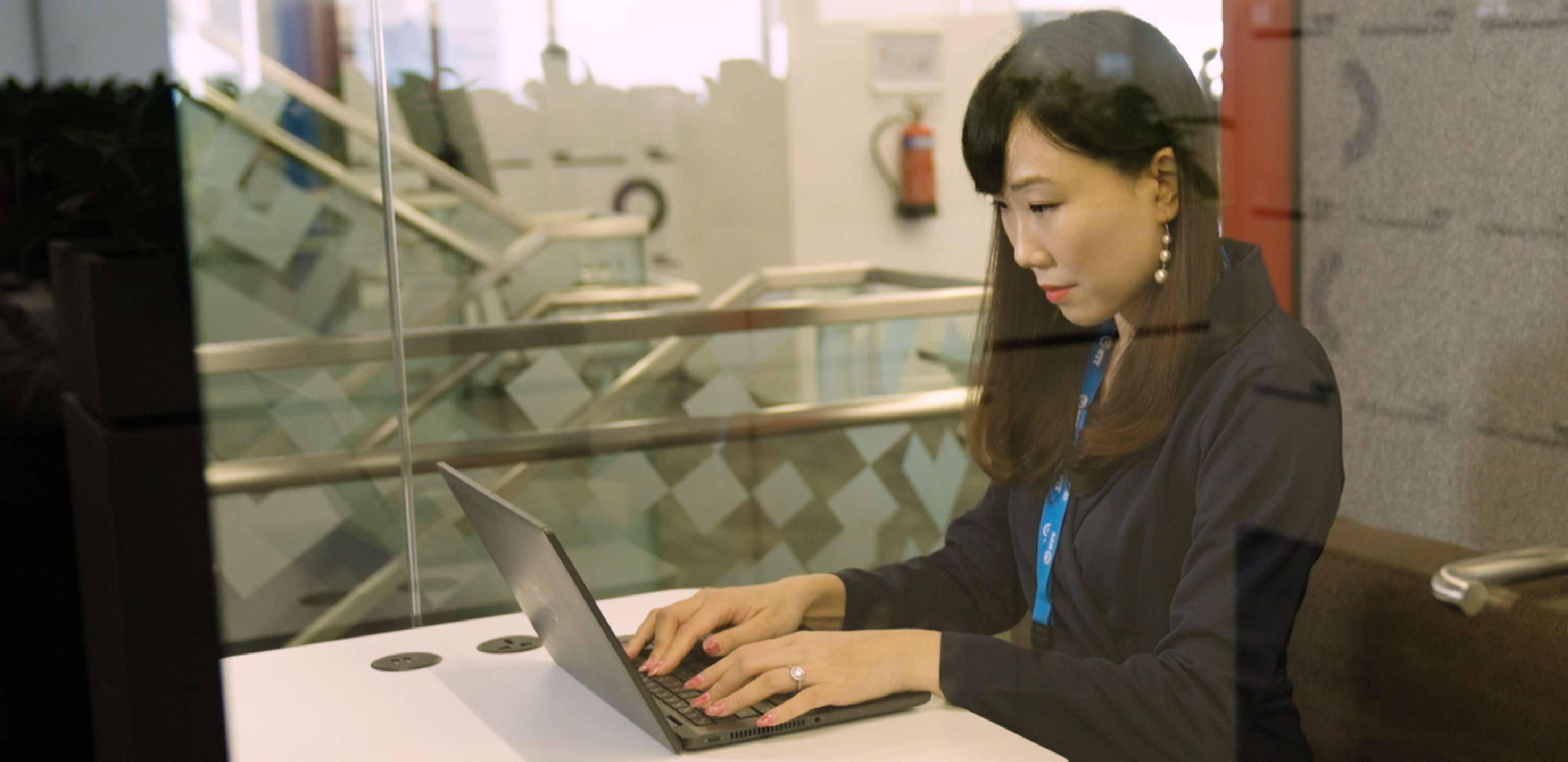-
Featured services
2026 Global AI Report: A Playbook for AI Leaders
Why AI strategy is your business strategy: The acceleration toward an AI-native state. Explore executive insights from AI leaders.
Access the playbook -
Services
View all services and productsLeverage our capabilities to accelerate your business transformation.
-
Services
Network Services
-
Services
Cloud
-
Services
Consulting
-
-
Services
Data and Artificial Intelligence
- AI and Intelligent Solutions
- Data/AI Strategy and Program
- Data Engineering and Platforms
- Data Governance and Management
- Data Visualization and Business Decision
- GenAI Consulting
- GenAI Platforms
- GenAI Industry Services
- GenAI Infrastructure Services
- GenAI Value Transformation
- View Data and Artificial Intelligence
-
Services
Infrastructure Solutions
-
Services
Global Data Centers
-
Services
CX and Digital Products
-
Services
Application Services
-
Services
Sustainability Services
-
Services
Digital Workplace
-
Services
Business Process Services
-
Services
Generative AI
-
Services
Cybersecurity
-
Services
Enterprise Application Platforms
![]()
Accelerate outcomes with agentic AI
Optimize workflows and get results with NTT DATA's Smart AI AgentTM Ecosystem
Create your roadmap -
-
-
Insights
Recent Insights
-
The Future of Networking in 2025 and Beyond
-
Using the cloud to cut costs needs the right approach
When organizations focus on transformation, a move to the cloud can deliver cost savings – but they often need expert advice to help them along their journey
-
Make zero trust security work for your organization
Make zero trust security work for your organization across hybrid work environments.
-
-
![]()
2026 Global AI Report: A Playbook for AI Leaders
Why AI strategy is your business strategy: The acceleration toward an AI-native state. Explore executive insights from AI leaders.
Access the playbook -
-
2026 Global AI Report: A Playbook for AI Leaders
Why AI strategy is your business strategy: The acceleration toward an AI-native state. Explore executive insights from AI leaders.
Access the playbook -
Discover how we accelerate your business transformation
-
About us
CLIENT STORIES
-
Liantis
Over time, Liantis – an established HR company in Belgium – had built up data islands and isolated solutions as part of their legacy system.
-
Randstad
We ensured that Randstad’s migration to Genesys Cloud CX had no impact on availability, ensuring an exceptional user experience for clients and talent.
-
-
CLIENT STORIES
-
Liantis
Over time, Liantis – an established HR company in Belgium – had built up data islands and isolated solutions as part of their legacy system.
-
Randstad
We ensured that Randstad’s migration to Genesys Cloud CX had no impact on availability, ensuring an exceptional user experience for clients and talent.
-
![]()
2026 Global AI Report: A Playbook for AI Leaders
Why AI strategy is your business strategy: The acceleration toward an AI-native state. Explore executive insights from AI leaders.
Access the playbook -
- Careers
Summary
Traditional workspaces were the norm in Singapore before the pandemic blurred the lines between home and office. When NTT DATA consolidated their work premises in the country, they used their own technology resources to design an intelligent workplace that would promote innovation and collaboration, and make employees proud to come back to the office. Replacing legacy infrastructure and going cloud-first have reduced costs by 30% and resulted in a 76% workplace satisfaction rating.
Business need


Transforming the office to support the future of work
Consolidating multiple businesses and ten offices in Singapore posed a challenge, but also an exciting opportunity. We had a traditional office setup where each person had their own desk and telephone. That changed when the pandemic reached us and our people suddenly had to work from home. As a technology company, we were lucky to have the resources to make that shift smoothly.
Jaselle Yeo, a business analyst, missed some of the office experience while working from home. "There’s good and bad things about working from home. The good is that you save time by not traveling to and fro, and can have meetings directly after each other. The downside is glitches in virtual meetings, and I cannot read a client’s body language as well as in person."
As restrictions lifted and it was safe to come back to the office, we wanted it to be a place that was appealing to our people – a place they wanted to come to. As our Vice President for IT Information Systems, Asia Pacific, Pascal Weiss, explains: "People need to come to the office for a higher purpose than to attend meetings, click 'connect' and then switch off. We needed to make sure that all employees feel valued for what they do, and feel excited to come back to the office and be in an environment where we can promote innovation and collaboration."
The new workspace had to be collaborative, with areas that people could use to sit and concentrate, have meetings in person and with colleagues overseas, and come together to boost creativity.
"We went into COVID, and overnight we started to work remotely. It helped us understand that remote work and hybrid working models are very feasible. So, while employees don’t spend every day in the office anymore, the workplace still plays a very important role."
Solution


Bringing together design and technology for new horizons
As a technology company that helps our clients to navigate the connected future through networks, services, solutions and infrastructure, we were excited to use our internal skills to create a great employee experience for our own people.
We consolidated ten offices and now have three workplace locations in Singapore. The Aperia office is our flagship office, with spaces designed for people to be productive and come together to better serve our clients. The other two offices are support locations.
We adopted a cloud-first approach with Microsoft Azure, supported by an intelligent network with Cisco. Bringing these technologies together enables additional features, such as being able to choose where to work within the office. We can monitor capacity, allow people to spontaneously book meeting rooms, and see how space is being used.
We use zero trust to maintain a secure environment, and have centralized and automated our IT operations, which are the backbone of our intelligent workplace.
In Aperia, we have double the number of meeting spaces we had in the previous buildings. "There are a lot of collaboration areas, such as the phone booth, meeting rooms, or even common areas like a pantry. And if you need silent time, or you need to have meeting with your client, you can always go to a meeting room," says Yeo.
The pandemic highlighted that it’s essential to have a safe and healthy working environment. Our technology enables us to monitor important health metrics like air quality and ambient lighting, allowing us to create a pleasant working environment. We also have cycling stations to help our people maintain their physical health.
"Overall, it’s an environment that contributes to mental health, which will facilitate positive interactions, and provides the technology enablement people need to get their jobs done," explains Johan G van Vuuren, Senior Vice President, Human Resources, Asia Pacific.
"NTT DATA really are pioneers in intelligent workplaces, and our Singapore workspace confirms this. Technology enables all these ecosystems to work together, helping to create a secure, managed and centralized environment."
Outcomes


Making hybrid work, work
"Compared to before, the office has a more vibrant vibe, and it’s so bright," says Janna Ybanez, Senior Talent Acquisition Analyst. "There’s more unbroken space. I can see that the workspace right now is more effective, especially for collaboration. We have so many areas where you can actually collaborate. And if you need to discuss anything in private, we have a couple of rooms that have more privacy. All the meeting rooms are designed for accessibility, in line with our commitment to creating a more inclusive workplace."
Improving the employee experience
We conducted a survey asking how our people experience the new office in terms of the physical environment and technology. The results show that participants had satisfaction scores of 76% for physical environment and technology.
Enhanced savings
The move to new offices allowed us to make one time savings through e-waste, relocation and decommissioning devices. On top of this we’ve seen a monthly opex cost savings of 40% coming from the consolidation of ISDN circuits and the migration of calling workloads to Microsoft Teams. By moving all our legacy servers to the cloud, we achieved a 30% cost reduction.
Working toward our sustainability goals
Decommissioning legacy infrastructure allows us to lower our utility consumption. We’re also moving to a paperless office. "With the support of Cisco and Microsoft, we’re implementing new technology that allows us to manage consumption better, enabling a more sustainable workplace and keeping our employees safe," says Weiss.
Speak to an expert





